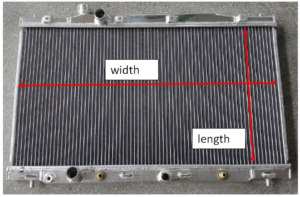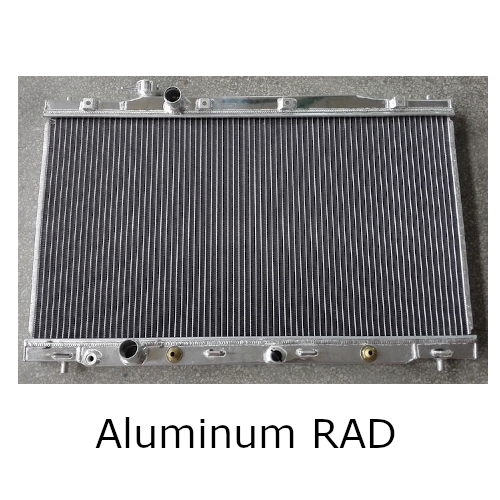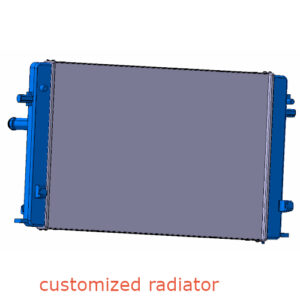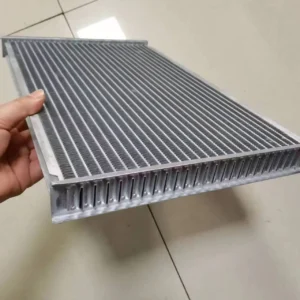Engine Cooling System
The role of the radiator in the engine cooling circuit is very important. It passes through 50/50 ethylene glycol and deionized water, and is responsible for dissipating the engine heat into the air. The radiator is one of the components of the ECM.

Function of engine cooling radiator
The heat taken from the engine is dissipated into the ambiance via the radiator.
BOM of radiator
| Nb.# | name | material | Temp | dimension |
| 1 | header | 3003 or 6061 | O | 1.5~3mm thickness |
| 2 | sideplate | 3003 | O | 1~2mm thickness |
| 3 | tube | 3003 | H14
H24 |
0.23~0.4mm thick |
| 4 | Fin | 3003 | H14~H18 | 0.07mm for ref. |
| 5 | Baffle(for multi-passes) | 3003 | H14 | 1.5~2mm |
| 6 | Gasket(for non full aluminum RAD ) | EPDM | / | Ensure air tightness |
Radiator dimension custom

Width & length of radiator core could be custom according to your original core.
Assembly brackets weld onto header according to your mounting points of frame.
Inlet and outlet pipes weld onto header according to your original radiator.
Draincock location designed to fit.
Tube pitch and fin pitch designed to have good heat dissipation.
Multi-passes are available to increase radiator heat transfer efficiency.
Thicker core is available to remove more heat from engine.
Additional technical information for radiator
Question 1
How much power is usually required for a radiator? For example, my car is a BMW 325i, and the maximum output power of the engine is 135kw.
Answer 1
Base on our experience, Radiators Cooling needs:
+ Engine power / 3
+ 4Kw for A/C models.
Then for BMW engine power of 135kw, considering A/C operation, you will need radiator power of 49Kw.
Question 2
Suddenly … engine temperature warning lights up. What ways help cooling up the engine?
Answer 2
Base on technical view and our understanding of coolant loop, below 3 ways are workable.
- Turn off A/C (condenser is in front of the radiator and is heating up the air before it enters the radiator)
- Turn on heating of the cabin (Heater core is an additionnal radiator in the engine cooling loop)
- Lower the gear (increases the engine rate -> increase the flow rate in the engine cooling loop thanks to the mechanical pump related to engine rate)
For more technical discussions, please contact us. Our R&D manager David is ready to help, his email is: david.teng.fiter@gmail.com





Reviews
There are no reviews yet.